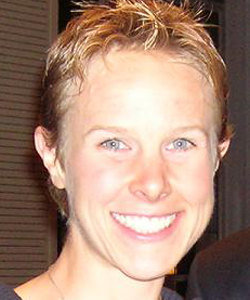Abstract
Mercury (Hg) is a widely distributed, redox-sensitive trace element with a complex global biogeochemical cycle. Exploring the Hg cycle through the Paleocene-Eocene Thermal Maximum (PETM) will provide valuable insight into the response of the Hg cycle to rising global temperature and ocean acidification. I will analyze the Hg concentration and Hg stable isotope composition of marine sediments deposited before, during, and after the PETM. Cores 1262 and 1263 (ODP Leg 208) have been characterized for a variety of geochemical parameters and will be the focus of my study. Determining changes in Hg cycling and isotopic composition during the PETM will provide important information about the behavior of Hg during global greenhouse warming events. This will enhance our understanding of how to interpret and utilize Hg concentration and isotope records in sediments from other time periods.
Biography
Growing up in Seattle, I have always had an awe, fascination, and love of the natural environment. I pursued a B.A. in Chemistry and one in Environmental Earth Sciences at Dartmouth College and became particularly interested in heavy metals in the environment. My senior year I completed two senior theses investigating arsenic mobility and coordination chemistry. After graduating from Dartmouth in 2005, I spent one year as a volunteer teacher in Guyana, and then entered the Geological Sciences Department at the University of Michigan to pursue a Ph.D. in geochemistry with Dr. Joel D. Blum. In the Blum lab group, I research mercury cycling in the marine environment. I look forward to examining the behavior of mercury through the PETM both to develop the use of mercury as a paleo-indicator and to understand how climate change may influence the fate of mercury in the environment.







